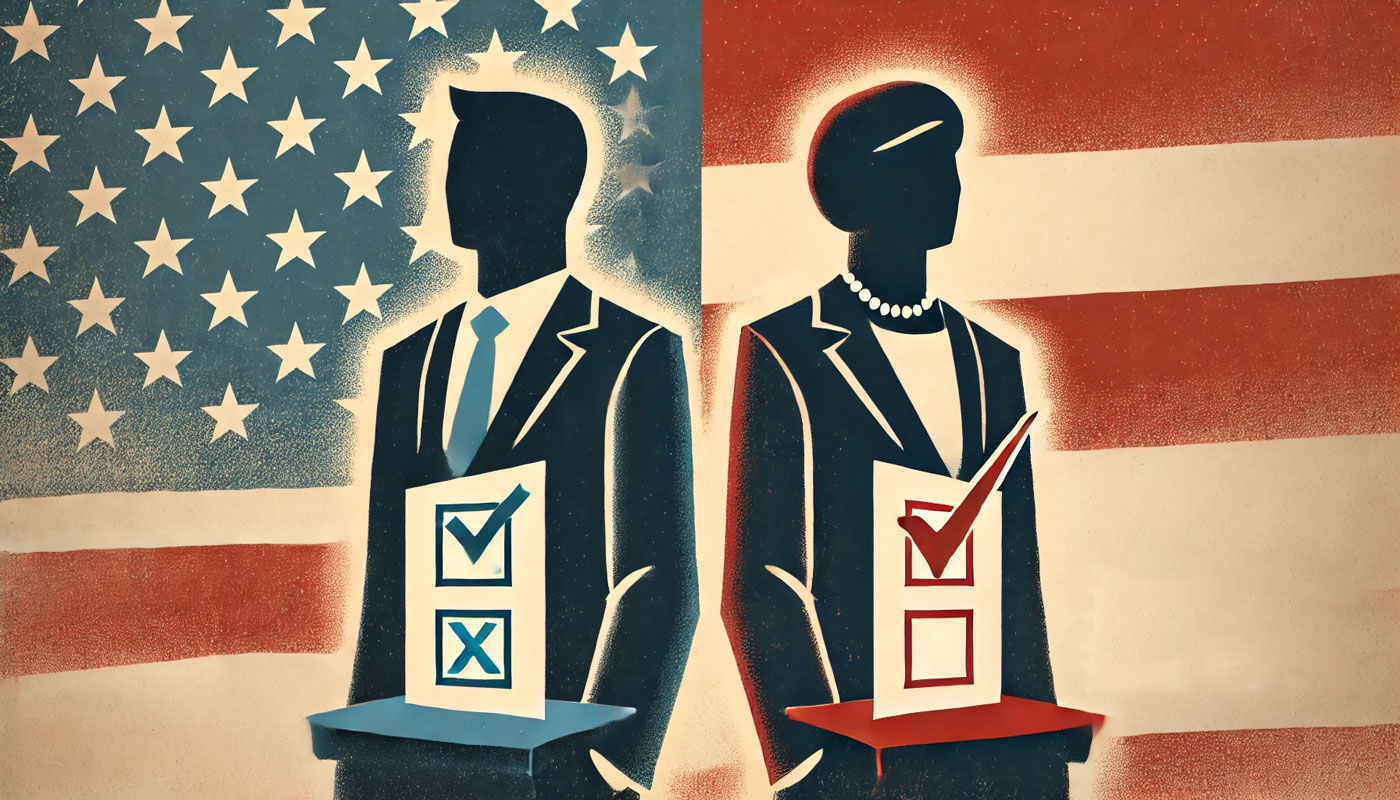Who Should I Vote For?

A 2024 US Election Guide for Discerning Voters
Here’s the reality behind the 2024 elections: it’s not about gender, race, or the usual party lines—it’s about something far more basic and uncomfortable. As we inch closer to November, the polls suggest that Kamala Harris is struggling to win over Black and Latino voters, while Donald Trump remains more popular with men than with women. No matter how much money the candidates blow on last-minute mudslinging, the overall picture won’t change. However, contrary to popular narratives, the driving forces behind voter alignment in this election have nothing to do with nationality, ethnicity, or gender. And it’s not just about Conservatives vs. Democrats either, though the parties would love you to think so.
There’s a more fundamental factor at play here, and if you have not made your choice, you might want to read this.
The Composition of Trump’s Support Base
Many of those Black and Latino voters choosing Trump over Harris share a common characteristic: many are first- and second-generation immigrants with limited formal education. Similarly, the women who aren’t falling for Trump’s charms tend to be more educated than the men who do. And let’s not forget the blue-collar backbone of the GOP’s base typically have less formal education than white-collar professionals, tend to align more with Trump’s messaging.
Granted, exceptions exist, such as highly educated supporters like Elon Musk (a first-gen immigrant, BTW) or J.D. Vance, these are outliers with specific personal motivations that don’t reflect the broader trend.
The Education Factor in Political Alignment
Research shows a pattern: people with less formal education tend to be more risk-averse. They fear change, they’re wary of outsiders, and they’re quicker to believe what they’re told—especially when it comes in the form of simple promises and catchy slogans.
It’s crucial to note that this support is primarily for Trump himself rather than traditional conservative ideology. Many Trump supporters would likely struggle to articulate the fundamental differences between Republicans and Democrats. But does that even matter? What passes for the Republican Party today is a far cry from what it was in 1854, and Trump, try as he might, is no Abraham Lincoln.
The Attention Span Paradigm
Trump, to his credit, knows perfectly how to exploit the innate traits of his electorate. With a limited vocabulary and promises that sound a lot like an oriental bazaar salesman’s pitch, he manages to speak to this base directly. He keeps the message simple, just like any good salesman does when trying to close a quick deal.
What makes this whole dynamic even more fascinating (and infuriating for many liberals) is the short attention span typical for less educated demographics. These voters are more likely to forget what he said last week, let alone the promises he broke four years ago. They’re quick to dismiss his latest blunders because, frankly, who has the time to remember all that? Short attention span make them more vulnerable to misinformation, but it also makes them more forgiving of a candidate who contradicts himself—repeatedly.
This natural gullibility allows for rapid dissemination of information without much scrutiny, letting contradictory statements slip by. It also increases vulnerability to misinformation campaigns. Trump’s approach—simple words, emotional promises—works wonders in this context. This approach, while ethically questionable, has proven remarkably effective.
The Liberal Conundrum
Meanwhile, over on the liberal side, you’ve got a different crowd—one that’s more educated and with a longer attention span. This demographic is more likely to scrutinize claims, remember past promises, and fact-check statements. Sure, the liberals could try to mimic Trump’s technique, but it’s not exactly their style to feed their followers spoonfuls of sweet little lies. And even if they did, their base wouldn’t buy it. They’d fact-check it, analyze it, and then write a blog post about why it’s problematic. They just don’t have the same appetite for a quick, feel-good pitch.
Implications for Voter Decision-Making.
A 2024 Guide for Discerning Voters
So, if you are still on the fence, take a moment and consider where you see yourself fitting into this spectrum. Are you swayed by superficial appeals or short-term promises or you are serious about supporting real democracy that may effectively be phased out by the “mob majority” version of it?
Because at the end of the day, your vote isn’t just about a candidate—it’s about the kind of America you want to wake up to come January.
Choose wisely. And if this post gave you a fresh perspective, share it, start conversations, and most importantly, vote with a fully informed perspective. Remember, by sharing this analysis, you’re not just spreading information – you’re potentially influencing the outcome of this election. Every mind changed, every voter educated, could tip the scales in what promises to be a razor-thin margin.
